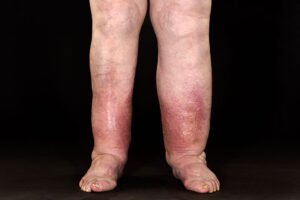Pictures of Genital Warts and Their Causes
Recognizing Genital Warts: A Visual Guide
Genital warts, caused by specific strains of the human papillomavirus (HPV), are among the most common sexually transmitted infections (STIs), with approximately 14 million new cases reported annually in the United States. Identifying these growths is crucial for timely intervention, even though many individuals with HPV may not develop visible warts. Understanding their appearance, transmission methods, and preventive strategies can significantly lower your risk.
Characteristics of Genital Warts
Genital warts vary widely in presentation and can appear on or around the genital and anal regions. Key features include:
-
Appearance: Warts may manifest as solitary bumps or cluster in cauliflower-like formations.
-
Size: They range from less than 1 millimeter to several centimeters if multiple warts merge.
-
Texture: Warts can be smooth, rough, or have finger-like projections.
-
Color: Typically skin-colored, but may also appear white, gray, pink, or brown.
-
Location: Common sites include the penis, scrotum, vulva, vagina, cervix, perineum, anus, pubic area, and upper thighs.
The onset of warts can take weeks to months after HPV exposure, and some individuals may carry the virus without visible symptoms.
Genital Warts by Location
Penis and Scrotum
Warts on the penis often appear on the shaft, near the tip, or under the foreskin in uncircumcised individuals. They can also develop on the scrotum. These growths may be subtle or pronounced, requiring careful inspection.
Vulva and Vagina
On the vulva, warts may appear on the labia or extend to the vaginal canal and cervix. Their presence can be harder to detect without medical examination, such as a colposcopy.
Perineum and Anal Area
The perineum, the region between the genitals and anus, is another common site for warts. Anal warts, which can form inside or around the anus, rarely obstruct the anal opening but may cause discomfort.
Thighs
Warts can occasionally appear on the upper inner thighs, sometimes extending further down. These are often linked to skin-to-skin contact during sexual activity.
Note: Images of genital warts may be graphic and unsettling for some viewers. Consult a healthcare provider for accurate diagnosis and visual references.
HPV Types and Their Role
Over 150 HPV strains exist, with around 40 affecting the genital region. Low-risk HPV types, particularly types 6 and 11, cause over 90% of genital wart cases. While most sexually active individuals encounter HPV at some point, not all strains lead to warts or pose significant health risks. High-risk strains, by contrast, are associated with cancers but are less likely to cause visible warts.
How Genital Warts Spread
Genital warts typically appear at the site of skin-to-skin sexual contact, though they can occasionally emerge in areas without reported contact. Transmission is possible even when no warts are visible, as HPV can remain dormant in the skin. Common sites include:
-
Penis and scrotum
-
Vulva and vagina
-
Cervix and anus
-
Perineum and thighs
Diagnosing Genital Warts
Healthcare providers often diagnose genital warts through visual inspection. In ambiguous cases, additional procedures may include:
-
Biopsy: A tissue sample is analyzed to confirm HPV presence and identify the strain.
-
Colposcopy: A magnified view of the vagina or cervix to detect subtle lesions.
Genital warts can resemble other skin conditions, such as skin tags, cysts, herpes sores, or molluscum contagiosum, making professional evaluation essential.
Preventing Genital Warts
The Centers for Disease Control and Prevention (CDC) recommends HPV vaccination as the primary prevention method. Key points include:
-
Vaccine: Gardasil 9 is advised for routine vaccination starting at ages 11–12, with approval for use as early as age 9 and, in some cases, up to age 45.
-
Condom Use: While condoms reduce HPV transmission risk, they do not eliminate it due to skin-to-skin contact in unprotected areas.
-
Regular Screenings: Routine STI screenings can help detect asymptomatic HPV infections.
Treatment Options for Genital Warts
Genital warts may resolve spontaneously within a year, but they can also persist or spread without intervention. Treatment options include:
-
Topical Medications: Prescription creams like imiquimod, podofilox, or sinecatechins (derived from green tea extract) are applied directly to warts.
-
Cryotherapy: Freezing warts to destroy affected tissue.
-
Surgical Methods: Laser therapy or electrosurgery to remove warts.
Even with treatment, warts may recur, and HPV can remain transmissible despite the absence of visible warts.
Why At-Home Remedies Are Risky
At-home treatments like duct tape, apple cider vinegar, or tea tree oil lack evidence for effectiveness on genital warts and may cause irritation or burns in sensitive areas. Over-the-counter wart treatments containing salicylic acid or benzoyl peroxide are unsuitable for genital skin and should be avoided.
Key Takeaways
Genital warts, a common manifestation of low-risk HPV strains, can appear on various genital and anal areas. Prompt diagnosis through visual inspection or medical tests ensures appropriate treatment. Vaccination and safe sexual practices are critical for prevention, while professional treatments like topical medications or cryotherapy offer effective management. Avoid unproven at-home remedies to protect delicate skin and seek guidance from a healthcare provider for any suspicious growths.
💡 Frequently Asked Questions
⭐ Expert Tips
- Include seasonal or trendy variations to keep your meals exciting.
- Highlight prep shortcuts or time-saving techniques for busy cooks.
- Consider dietary restrictions and include substitution suggestions.
✅ Key Takeaways
- These dinner ideas are perfect for impressing guests or enjoying special occasions.
- Choose recipes that match your skill level and available kitchen tools.
- Presentation and taste both contribute to a memorable dining experience.
📣 Join Our Community
Want more inspiration like this? Subscribe to our newsletter for weekly dinner ideas and cooking tips!






